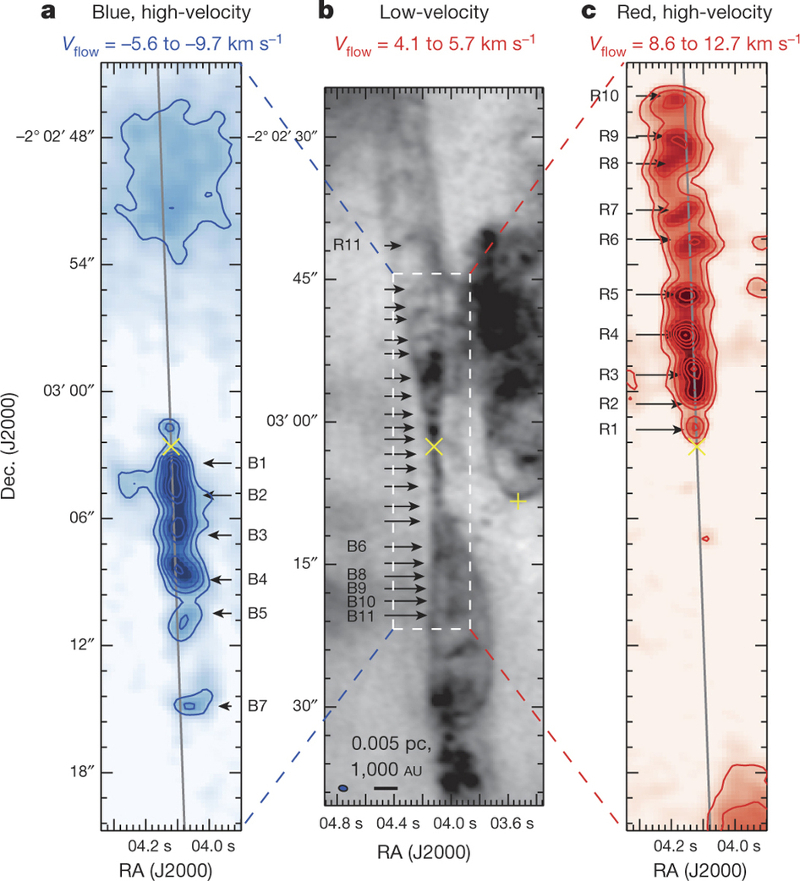| EPoS Contribution |
|
Uncovering episodic outflows and their feedback in protostellar clusters
Adele Plunkett ESO, Santiago, CL | |
| Protostars drive energetic jets that entrain surrounding gas in the form of outflows, simultaneously injecting momentum in the surrounding gas. Hence, outflows are a bridge for feedback from individual protostars to their nascent cluster environment. The outflow morphology and efficiency of momentum transfer between jet-outflow-cluster likely determines the extent to which outflows provide significant feedback to regulate ongoing star formation. This is especially relevant in clusters, which are the most common environments for star formation. Comprehensive observing campaigns of outflow feedback in clusters should incorporate single dish and interferometer observations that are sensitive to emission on cluster (few parsecs) to core (hundreds of AU) scales, respectively. Here we present such observations and analysis of the protostellar cluster Serpens South, which is experiencing an early and active phase of star formation. Following the combination of IRAM+CARMA (single dish + interferometer) maps of Serpens South, recent ALMA observations feature several cases of complex outflow morphologies near the central "hub" region that we mapped. The complementary ALMA, CARMA, and IRAM observations probe scales ranging from 400 AU to 0.8 pc. High-resolution observations clearly link outflows with their driving sources, and in this case they reveal an episodic accretion and launch mechanism. Highly-collimated, episodic outflows likely provide efficient momentum transfer for driving turbulence. This suite of observations provides constraints for simulations of protostellar outflows in clusters that (should) include episodic accretion and outflow-driven turbulence. | |
 | |
| Caption: Episodic outflow from the protostar CARMA-7 (yellow cross) in Serpens South. Here we show a region about 1' (0.1 pc) in length, and in total we mapped 2'x4' in Serpens South where more than 10 protostars reside. Panels (a, c) show high-velocity blueshifted and redshifted CO (2-1) emission, respectively. Panel (b) includes low-velocity CO emission, showing the cavity surrounding collimated ejecta. Labels B1-B11 and R1-R11 indicate 22 ejecta features. The grey lines mark the 4 degree position angle of the C7 outflow lobes, which are very collimated and include episodic bursts. The yellow "plus" symbol marks a neighbouring protostar, CARMA-6, which also drives an outflow with velocities not shown here. (Figure from Plunkett et al. 2015, Nature.) | |
| Collaborators: H. Arce, Yale, US D. Mardones, U Chile, CL M. Dunham, CfA/SAO, US M. Fernandez-Lopez, IAdR, AR J. Gallardo, ALMA, CL S. Corder, ALMA, CL |
Key publication
Suggested Session: Stellar Feedback |

